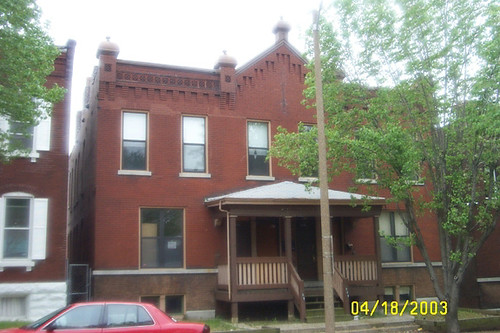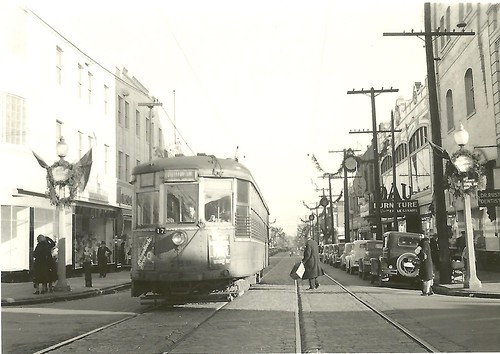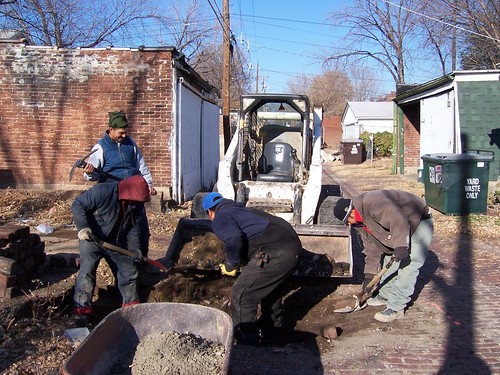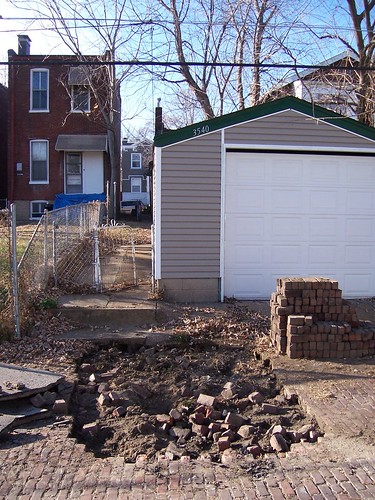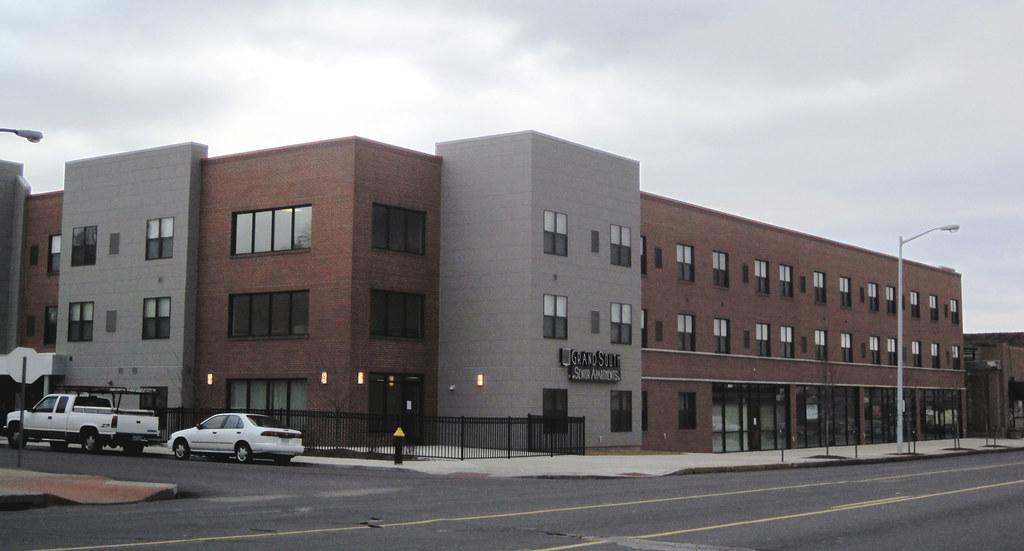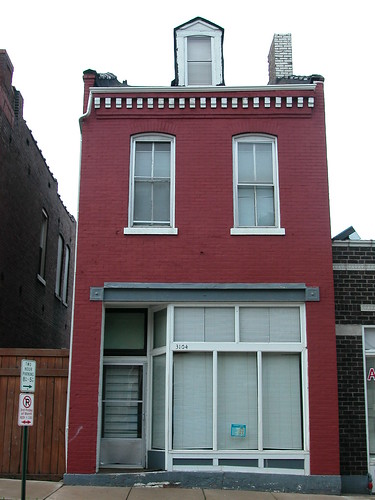by Michael R. Allen
Sparing readers of chickens coming home platitudes, I will state that there are a lot of chickens in St. Louis city these days. Urban agriculture in the city is becoming more diversified, and many backyard farmers are adding chicken coops with resident hens and roosters. The coops range from formally-designed to organically-built, small to large. Many are made from wooden pieces found in alleys.
On July 11, Travis DeRousse organized the first “St. Louis Chicken Coop Tour” (this is the first by that name, not the first). The tour included eight coops in Shaw, Tower Grove East, Gravois Park, Marine Villa, Benton Park and Dutchtown. The concentration in a relatively small part of south St. Louis suggests that there are dozens of such coops all over the city. Since most coops are low buildings, and most chickens pretty quiet, neighbors may not even realize what is going on next door or down the block. With over 60 people in attendance on the tour, there seems to be strong interest in building more coops and bringing more chickens in the city — which is a return to historic practice, actually.

The first coop on the tour was Greg’s elegant backyard coop in Shaw. With vergeboards, ornament and a hinged salvaged window, this is a fine work of architecture.

Cara Marie in Tower Grove East built a coop of wood from alleys, with the different pieces almost striated as horizontal siding.

Travis’ own coop in Tower Grove East is a small, neat raised building. The problem: his dogs shared the backyard, but not for long. The dogs killed the chickens. Chickens need to be protected from dogs. Some coop owners on the tour spoke of how their cats were safe around chickens, and protected them. Not all cats are created equal, however.

Just one block down the street from Travis, Sara Kate has what was the largest coop of the tour. Again, the alley salvage craftsmanship shows. The shed roof is hinged to open for easy access.

I had to leave the tour at the Community Arts and Media Project (CAMP), the fourth stop, but not before peeking in the CAMP coop to see not only a hen but also a duck! There are certainly lots of possibilities in urban farming.
The contemporary urban coops are just the latest manifestation of chicken-raising in the city. Old newspapers are full of tales, mostly silly, that illustrate how prevalent chickens were in St. Louis in the 19th and early 20th centuries. An 1897 article in the St. Louis Post-Dispatch gave a hi-falutin “city farmer” space to describe good practices. The farmer called for prohibiting chickens in the city so that farms were all-vegetable!
The August 20, 1881 issue of the Post-Dispatch carried the article “The Compton Hill Chickens,” showing that the southsiders of today are really just upholding tradition. A Mr. Brunaugh of 2744 Lafayette Avenue reported that men were going door to door on Compton Hill trying to sell chickens that they brought along. The sales ruse included letting the a chicken go, causing a mad dash by the “salesmen” across back yards. They would capture their hen but also pick up a few others on the way. “The finest chickens in the city are raised on Compton Hill,” the reporter wrote.
Sometimes chickens led to courtroom drama, too. The article “Poisoned Fowls Cause of Quarrel” in the October 5, 1904 issue of the Post-Dispatch reported on the curious sudden death of 35 of Mrs. Fox’s chickens. (There were no limits on number of chickens at that time, and I doubt that today’s chicken farmers have any aspirations to a number as big as 35.) Mrs. Fox accused next-door neighbor Mrs. Catherine Seher of 2812 Arsenal Street of throwing poisoned bread over the fence. Justice Kleiber of the Police Court sided with Mrs. Seher, however, after testimony by all parties. Miss Nellie Seher, daughter of the accused, was a strong witness. The article notes that Miss Seher “did not use adjectives in her testimony, and was therefore more than ordinarily convincing.”
